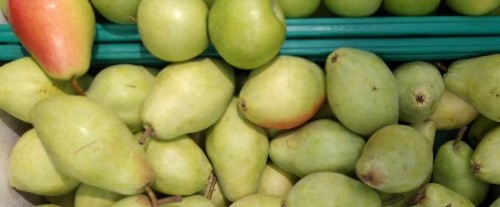What fruit is rare in Greece?
While Greece is known for its rich variety of fruits, there are some fruits that might be considered relatively rare or less commonly grown in the country due to climatic or geographical factors. One such example is the tropical fruit, mango. Mangoes require a warm and humid climate to thrive, which is not commonly found in Greece’s Mediterranean climate.
Another example could be certain types of tropical fruits like lychee or durian, which are not traditionally grown in Greece due to the country’s climate. These fruits require more tropical conditions than what Greece offers.

However, it’s important to note that Greece has a diverse range of locally grown fruits such as olives, grapes, figs, oranges, lemons, pomegranates, and various stone fruits like peaches and cherries. While some fruits might be rarer due to climate limitations, Greece still boasts a bountiful selection of fruits that are well-suited to its Mediterranean climate.
What are the characteristics of the Greek pear?
The Greek pear, also known as “Achaia” or “Achilleas,” is a variety of pear that is commonly grown in Greece. It’s important to note that there are several pear varieties cultivated in Greece, each with its own specific characteristics. However, I can provide you with some general characteristics that might apply to Greek pear varieties:
- Shape and Size: Greek pears typically have a rounded, bulbous base that tapers towards the stem end. They are medium to large in size.
- Color: Depending on the variety, Greek pears can have a green or yellow skin color. Some varieties might have a reddish blush on the side exposed to the sun.
- Texture: Greek pears often have a smooth and thin skin. The flesh is usually juicy, tender, and slightly grainy near the core.
- Flavor: Greek pears are known for their sweet and aromatic flavor. The taste can range from mild to slightly tangy, and they become sweeter as they ripen.
- Aroma: Many Greek pear varieties have a pleasant, fragrant aroma that becomes more pronounced as they ripen.
- Harvest Season: Greek pears are typically harvested in late summer to early fall, depending on the specific variety and local climate conditions.
- Uses: Greek pears are commonly enjoyed fresh as a snack, in salads, or as an addition to cheese platters. They can also be used in cooking and baking, adding a touch of sweetness to both sweet and savory dishes.
- Storage: Greek pears are usually harvested when slightly underripe to prevent bruising during transportation. They can be left to ripen at room temperature. Once ripe, they should be stored in the refrigerator to prolong their freshness.
It’s worth noting that Greece has a diverse climate and geography, which allows for the cultivation of various pear varieties. As such, there might be slight variations in the characteristics of Greek pears depending on the region and specific variety.
Where do Greek pears grow?
Greek pears are grown in various regions throughout Greece, taking advantage of the country’s diverse climate and geography. Pears are a common fruit crop in Greece, and they can be found in both mainland and island regions. Some of the notable pear-growing areas in Greece include:
- Peloponnese: The Peloponnese region in southern Greece is known for its extensive fruit cultivation, including pears. This region’s climate and fertile soil provide suitable conditions for pear orchards.
- Central Macedonia: This northern region of Greece is another significant pear-growing area. The fertile plains and favorable climate contribute to the successful cultivation of pears.
- Thessaly: Thessaly, located in central Greece, is another important pear-producing region. The moderate climate and fertile land support the growth of pears.
- Epirus: The Epirus region in northwestern Greece is known for producing high-quality pears due to its favorable climate and soil conditions.
- Crete: The island of Crete, the largest in Greece, also has areas suitable for pear cultivation. The island’s diverse microclimates allow for the growth of various fruit crops, including pears.
- Ionian Islands: Islands like Corfu and Kefalonia in the Ionian Sea also have conditions suitable for pear orchards.
Greek pears benefit from the Mediterranean climate, with its mild, wet winters and hot, dry summers. The availability of various microclimates across the country allows for the cultivation of different pear varieties, each with its unique characteristics.
Keep in mind that the exact areas where pears are grown might vary based on specific varieties, regional conditions, and changes in agricultural practices over time. Greek pear >>





